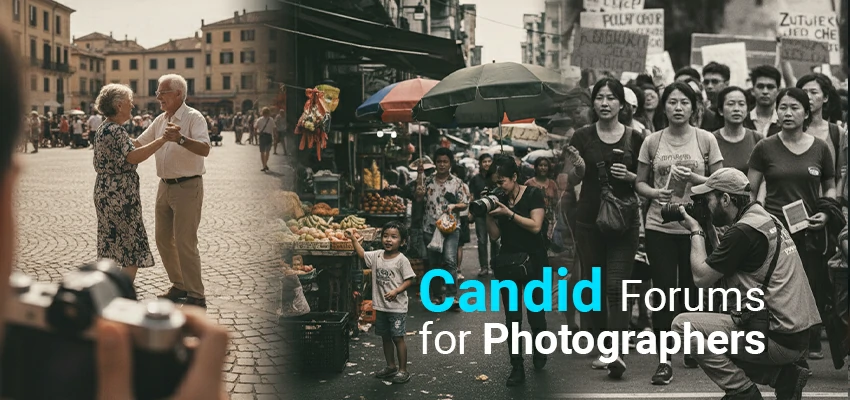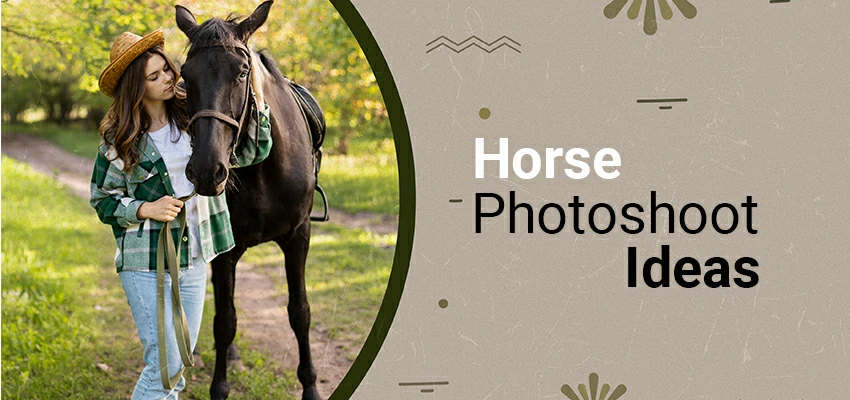Creative Photography Ideas for Beginners

Want to try something new in photography? Creative photography lets you explore fresh ideas and techniques. It helps your photos stand out. Also, it pushes you beyond your comfort zone. You’ll capture images that evoke curiosity, emotion, and wonder.
Try new ideas to improve your photography and portfolio. Photography is about seeing the world differently and capturing it with your camera. Experiment with light or optical illusions to make your photos unique.
In this guide, we’ll share photography ideas to try today. These techniques will enhance your photos and help you find your style. Let’s spark your creativity!
1. Double Exposure Photography
Double exposure photography merges two images into one. This creates a surreal, dreamlike effect. The technique overlays photos, crafting unique compositions. It allows for visual layering and storytelling, using contrasting or complementary elements.
Use your camera’s settings or software like Photoshop to take double exposure photos. First, pick two images that complement each other. For example, combine a portrait with a landscape, or a silhouette with abstract patterns.
Ideas for Double Exposure Photography:
- Nature and Portraits: Blend a person’s portrait with trees, mountains, or cityscapes. It should have a whimsical, nature-inspired effect.
- Silhouettes and Textures: Use a silhouette as the base image. Then, layer it with textures, like clouds, water, or fabric. This adds depth and intrigue.
- Abstract Patterns and Shapes: Mix geometric shapes or abstract patterns with everyday objects. It will create a modern, artistic feel.
2. Light Painting Photography
Light painting photography uses light to create art. By using a long exposure, you can capture moving lights, like flashlights or LED sticks. This results in images with bright trails and patterns.
For light painting, you’ll need a camera with manual settings, a tripod, and a light source. First, set the camera’s shutter speed to 10-30 seconds. Next, adjust the aperture and ISO for exposure. Finally, use the light source to create shapes, write words, or make abstract designs.
Ideas for Light Painting Photography:
- Light Trails: Use a flashlight or glow sticks to create light streaks in the air. Try different colors for added visual interest.
- Sparklers and Steel Wool: For a more intense effect, use sparklers or spinning steel wool (safely, in a controlled environment). They create fiery, dramatic trails.
- Portrait Light Painting: Combine light painting with portrait photography. Draw light around or behind your subject. This adds a glowing aura or background.
3. Forced Perspective Photography
Forced perspective photography tricks the viewer’s perception of size, scale, and distance. By positioning subjects well, you can make things look bigger, smaller, nearer, or farther than they are. It’s a fun method that creates fascinating images. You only need creativity and a good eye for composition, no expensive gear.
Create a forced perspective photo by aligning subjects to trick the eye. Place one person close to the camera with their hand out, and another appears to stand on it in the background. Experiment with positioning, angles, and distance to achieve the illusion.
Ideas for Forced Perspective Photography:
- Playing with Scale: Make objects appear bigger or smaller. Hold a toy dinosaur to make it seem like it’s attacking someone.
- Interaction with Objects: Place someone with a large object, like a building, or amidst landmarks or natural elements.
- Levitation Effects: Make someone appear to float using forced perspective or stand on a small object like a book.
4. Bokeh Photography
Bokeh photography creates dreamy, soft backgrounds by blurring out-of-focus elements. It turns light sources into beautiful, diffused circles. This effect adds depth to photos and highlights the subject against a pleasing backdrop.
To create bokeh, use a lens with a wide aperture, like f/1.8 or f/2.8. Also, place your subject far from the background. Focus on the subject. You’ll see the background, especially lights, blur into circles. Bokeh is most beautiful with small light sources, such as fairy lights, city lights, or sunlight through leaves.
Ideas for Bokeh Photography:
- Holiday Lights: Shoot portraits or objects in front of holiday lights. This will create a colorful, festive bokeh effect in the background.
- Water Droplets and Dew: Photograph morning dew or raindrops on leaves to capture bokeh in nature. The tiny reflections create beautiful bokeh when blurred.
- Shaped Bokeh: Make bokeh shapes by cutting patterns, like hearts or stars, on paper. Then, attach it to your lens. The lights will match the cutout’s shape, adding a unique touch to your photos.
5. Reflections and Mirrors
Reflections and mirrors add depth, symmetry, and mystery to photos. They create striking compositions that draw viewers in and add a unique perspective to everyday scenes.
Experiment with angles and perspectives to enhance reflections. For instance, shoot low to capture a puddle’s reflection. Alternatively, use a mirror for a unique framing. This also lets you explore symmetry, creating balanced, mirror-like compositions.
Ideas for Reflection and Mirror Photography:
- Nature Reflections: Capture the reflection of mountains, trees, or skies in still water. This will create a tranquil, mirror-like effect.
- Urban Reflections: Use windows, glass buildings, or wet city streets after rain to reflect city lights and structures.
- Portraits with Mirrors: Place your subject in front of a mirror. Then, try different angles for multiple reflections or unique frames. Additionally, use handheld mirrors to add interest to the portrait.
6. Motion Blur and Panning
Motion blur and panning are photography techniques that showcase movement. It makes moving objects appear fast by adding blur. In contrast, panning keeps a moving subject in focus while blurring the background. Both methods bring excitement and energy to your photos.
Set your camera to a slow shutter speed (1/15 or 1/30 seconds) and hold steady. Move your camera with the subject to keep it focused while the background blurs.
Ideas for Motion Blur & Panning Photography:
- Street Scenes: Show the blur of passing cars, bikes, and pedestrians. It should convey the city’s hustle and bustle.
- Sports and Action Shots: Use panning to photograph athletes or fast-moving subjects, like runners. It will emphasize their speed and motion.
- Waterfalls and Rivers: Slow the shutter speed to blur the water’s movement. This will create a smooth, misty effect. It will contrast beautifully with the surrounding rocks and plants.
7. Silhouette Photography
Silhouette photography shows subjects as dark shapes against a bright background. This method highlights their form. It also creates emotion, drama, and mystery by focusing on outlines and leaving much to the viewer’s imagination.
Position your subject in bright light, such as from a sunset or window. Adjust your camera to expose for the background. This will make the subject appear dark. Use simple shapes like people, animals, or objects with clear outlines.
Ideas for Silhouette Photography:
- Sunset and Sunrise Scenes: Photograph people or objects against a vivid sunset or sunrise. This will create warm, glowing silhouettes.
- Nature Silhouettes: Use silhouettes of trees, animals, or mountains. It will show their beauty and dramatic forms.
- Creative Poses: Use silhouettes to explore creative poses and interactions. For instance, silhouettes of people jumping, dancing, or holding hands are striking.
8. Macro Photography with Everyday Objects
Macro photography uncovers textures and patterns in small subjects. It’s not limited to nature. Everyday items, like kitchen utensils, can shine in close-up shots.
Begin macro photography with your camera or smartphone in macro mode. For a budget option, consider extension tubes or close-up filters. Then, get close to your subject, focus on detail, and use a narrow depth of field to isolate it.
Ideas for Macro Photography with Everyday Objects:
- Water Droplets: Capture water droplets on leaves, glass, or other surfaces. They will reveal reflections and refracted light.
- Textures and Fabrics: Explore the fine textures of fabrics, paper, or wood. This will reveal patterns and details invisible to the naked eye.
- Kitchen Items: Take photos of coffee beans, spices, or fizzy drinks. These common items show unique textures and colors up close.
9. Using Colored Gels and Filters
Colored gels and filters transform mood and tone in photography by adding vibrant colors and effects. Gels cast a colored glow over light sources, while filters tint the entire image. They create eye-catching photos with rich hues.
First, get colored gels for your lights or filters for your lens. Then, experiment with colors and placements. This can create dramatic portraits or fun, abstract images. Mixing colors or layering gels adds depth to your photos.
Ideas for Using Colored Gels and Filters:
- Portrait Photography: Use contrasting colors, like blue and orange. They will create dramatic portrait lighting. It will emphasize facial features and add mood.
- Colored Shadows and Highlights: Place gels on side lights to cast colored shadows or highlights. This is especially striking when photographing objects with interesting shapes.
- Abstract and Creative Shots: Use multiple gels for a surreal look. You can also place gels over objects or backgrounds to change their color and add interest.
10. Minimalist Photography
Minimalist photography uses simplicity to create powerful images. It strips down compositions to essentials, emphasizing shapes, colors, and negative space. This style creates calm, balanced, and visually pleasing images that focus viewers on what’s important.
To take minimalist photos, seek clean backgrounds, simple lines, and one subject. Use negative space to highlight your subject and direct the viewer’s eye. This approach suits natural and urban scenes, plus still-life photography. Aim to find beauty in simplicity, allowing each photo element to shine.
Ideas for Minimalist Photography:
- Single-Color Backgrounds: Photograph a subject against a blank wall or the sky. This will highlight the subject’s shape and color.
- Geometric Patterns and Lines: Use stairs and windows to make bold designs from simple shapes and lines.
- Isolated Objects in Nature: Capture a single leaf, a lone tree, or a small rock in a vast landscape. Emphasize the contrast between the subject and its surroundings.
Final Thoughts
Break free from tradition in creative photography. Experiment with double exposure, light, and objects to find your style. Practice and try new things to grow with each shot.
Experiment with these techniques and have fun! You’ll discover your creativity and potential behind the lens.














